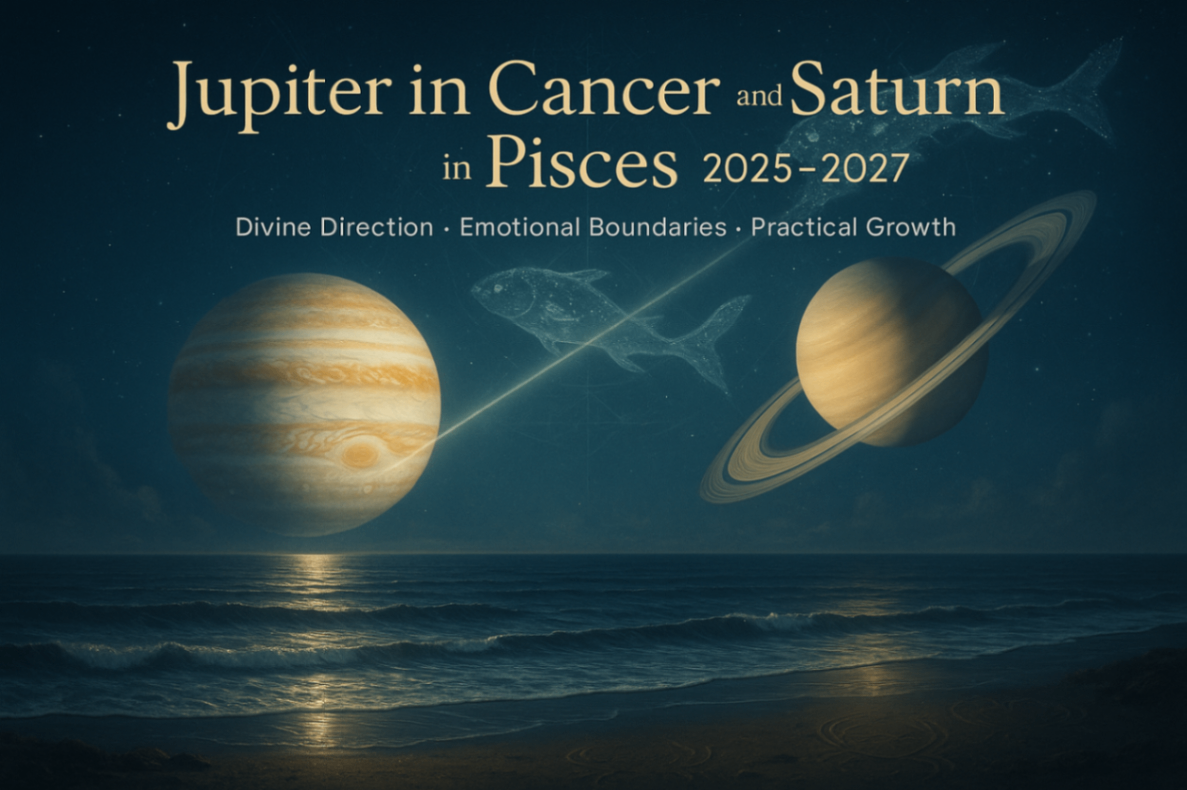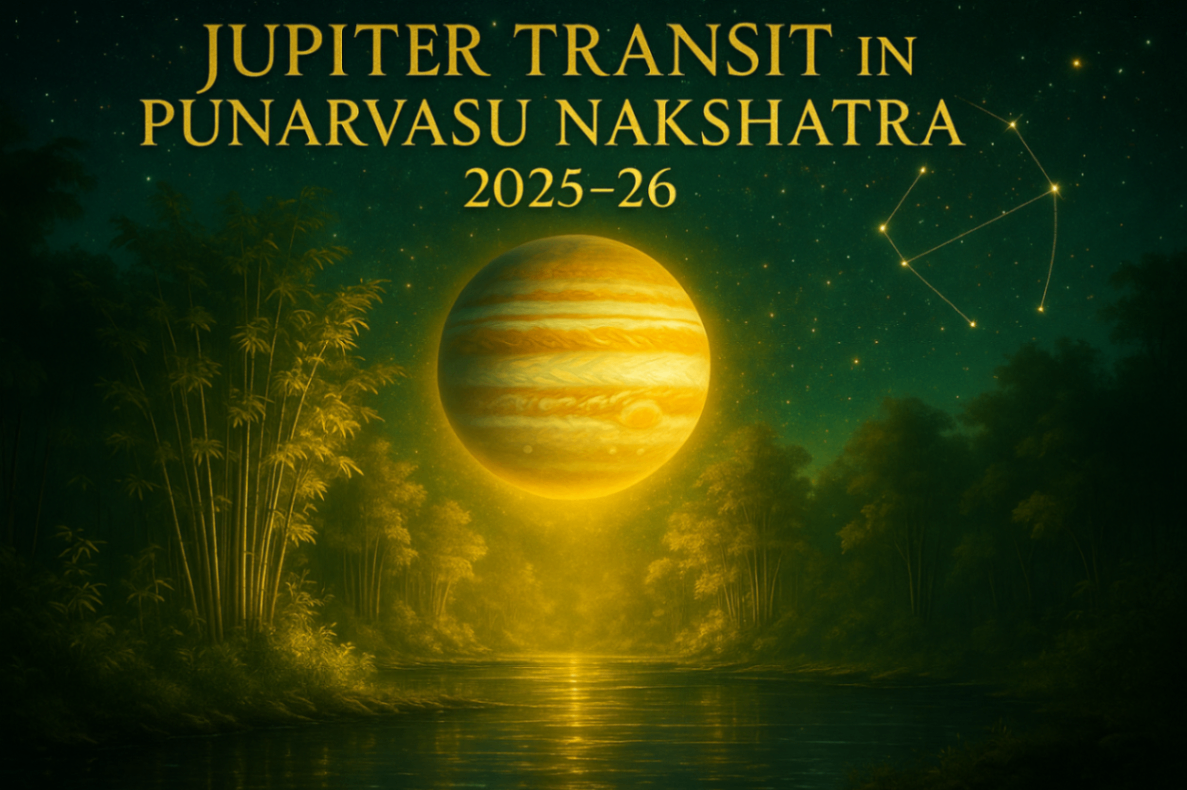Introduction to Vedic Astrology

Vedic astrology, an ancient practice rooted in the Vedas, has been guiding individuals for thousands of years. It is based on the positions of planets and stars at the time of ones birth and provides insights into various aspects of life. This ancient wisdom helps in understanding the influence of celestial bodies on human lives.
Understanding the Role of Transits in Vedic Astrology
In Vedic astrology, transits, also known as Gochar, are crucial for making predictions. Transits refer to the current positions of planets as they move through different signs of the zodiac. The significance of a transit lies in its ability to trigger events promised in a natal chart, provided the Dasha (planetary period) is favorable.
The Importance of Major Transits: Saturn and Jupiter
Among all transits, those of Saturn (Shani) and Jupiter (Guru) are considered paramount due to their prolonged stay in each sign and their significant impact on a persons life.
Saturn, known as the Lord of Karma, transits each sign approximately every 2.5 years. Its transit can indicate delays, obstacles, and challenges but also provides a chance for deep learning and maturity.
Jupiter, the Great Benefic, transits each sign yearly. Its movement brings growth, wisdom, and opportunities. When both Saturn and Jupiter simultaneously aspect a particular house or sign, it is known as the Double Transit Principle, which often signifies significant life events.
Calculating Transits
To understand the impact of transits, astrologers first identify the natal promise in the birth chart. Then, they check the Dasha and finally see how transits align with these factors. Transits alone cannot create events but act as triggers when the right time (Dasha) and promise (natal chart) are in place.
Classic Texts on Transits in Vedic Astrology
In classical Vedic astrology texts, transits are described as celestial movements that influence the timing and nature of events in one’s life. According to these texts, transits have the power to enhance or diminish the effects of a planets placement in a birth chart. Brihat Parashara Hora Shastra, a fundamental text in Vedic astrology, states that a planet’s transit over a house or its aspect to a house can activate the latent potentialities signified by that house.
Moorti Nirnaya in Transits
Moorti Nirnaya is a method used in Vedic astrology to evaluate the results of Jupiter and Saturn transits based on the position of the Moon at the time of transit. This method classifies the transit into four categories:
Swarn Moorti (Golden): Highly beneficial results.
Rajata Moorti (Silver): Good results.
Tamra Moorti (Copper): Moderate results.
Loha Moorti (Iron): Challenging results.
How to Calculate Moorti Nirnaya
To determine the Moorti Nirnaya, astrologers compare the position of the transiting Moon from the natal Moon:
If the transiting Moon is in the 6th, 11th, or same sign as the natal Moon, it is Swarn Moorti.
If in the 2nd, 5th, or 9th sign, it is Rajata Moorti.
If in the 3rd, 7th, or 10th sign, it is Tamra Moorti.
If in the 4th, 8th, or 12th sign, it is Loha Moorti.
Case Study: Jupiter Transit in Gemini (2025)

Jupiter will transit Gemini on May 15, 2025, and remain there until June 1, 2026. The impact of this transit will vary based on the Moorti Nirnaya calculations for different moon signs.
For Aries (Mesha Rashi), this transit will result in Loha Moorti, indicating challenging times.
For Taurus (Vrishabha Rashi), it will form Tamra Moorti, bringing moderate results.
For Gemini (Mithun Rashi), it will be Swarn Moorti, indicating highly beneficial outcomes.
Cancer (Karka Rashi) will experience Rajata Moorti, promising good results.
What to Expect During Jupiter’s Transit in Gemini
During this transit, Jupiter in Gemini (Mithun Rashi Guru) will influence communication, learning, and adaptability. Gemini, an air sign ruled by Mercury, represents intellect, versatility, and communication. When Jupiter, the planet of wisdom and expansion, transits this sign, there is a collective shift towards intellectual growth, curiosity, and the desire for knowledge.
Learning and Education: This period is ideal for pursuing education and expanding one’s knowledge base. New learning opportunities may arise, and those who engage in intellectual pursuits are likely to benefit greatly.
Travel and Communication: There may be an increase in travel, especially for educational or professional reasons. Communication will be a key theme, with people feeling more inclined to share ideas and connect with others.
Relationships: This transit may bring growth and expansion in personal relationships, especially those based on intellectual compatibility. For some, it may indicate forming new friendships or partnerships that are mentally stimulating.
How Long Does Jupiter Transit a House?
Jupiter typically takes about one year to transit through each sign or house in the zodiac. This means that its influence is felt for a significant period, allowing ample time for its energies to manifest in various areas of life. Understanding how long Jupiter stays in a house is crucial for predicting its effects.
When Jupiter is Coming in Favor of Gemini
For those with Gemini (Mithun Rashi) as their ascendant or Moon sign, Jupiter’s transit in Gemini is particularly favorable. This period will enhance their natural traits of curiosity and adaptability, making it a great time for learning and personal growth. Jupiter in Gemini 2025 will offer opportunities for expansion, especially in areas related to communication and knowledge.
The Role of Rahu and Ketu in Transits
Rahu and Ketu, the lunar nodes, also play a significant role in transits. Their transits can bring sudden and unexpected changes, often challenging in nature due to their malefic nature. When these nodes transit over natal planets or key points in the chart, they can activate those areas, often bringing transformation and upheaval.
The Upcoming March 2025 Rahu-Ketu and Saturn Conjunction
In March 2025, Rahu and Ketu will grip Saturn in their axis. This conjunction is significant as it involves three malefic planets and can indicate intense periods of transformation and challenge, especially if they aspect or conjunct key points in the natal chart.
Remedies in Vedic Astrology
Vedic astrology provides various remedies to mitigate the adverse effects of challenging transits. Regular recitation of mantras, wearing specific gemstones, and performing specific rituals can help alleviate the negative influences.
One widely recommended remedy is the recital of the Narayana Kavach and Vishnu Sahasranama. These are powerful prayers that offer protection and peace. Another effective remedy for mitigating the malefic effects of Rahu and Ketu is the regular chanting of the Hanuman Chalisa seven times a day for 40 days.
Conclusion
Understanding transits and their impact is a crucial aspect of Vedic astrology. While transits alone cannot create events, they act as significant triggers when aligned with the natal promise and favorable Dashas. By understanding and applying the principles of Moorti Nirnaya and the Double Transit Principle, one can gain deeper insights into the timing and nature of significant life events.
For those experiencing challenging transits, Vedic astrology offers various remedies to help mitigate adverse effects and harness positive energies. Regular practice of recommended mantras and rituals can provide the necessary support and protection during difficult times.
Explore more about Jupiter Transit Gemini Zodiac Sign, and stay prepared for what the future holds.





































